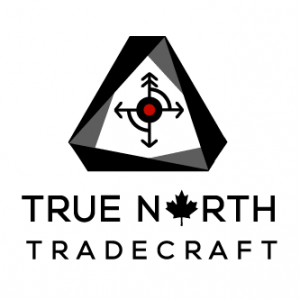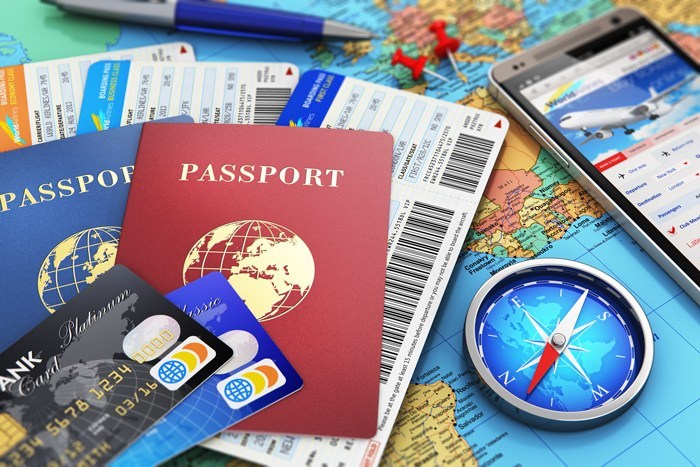
***Note: this is the first in a series on personal travel security.***
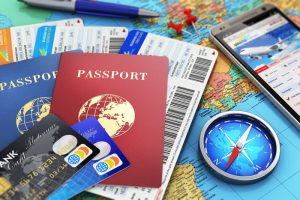
Proper Previous Planning Prevents Piss-Poor Performance!
If you plan well, you have better chances of travelling well. It’s that simple.
Every time I travel, whether it’s for an overnight or for a sustained travel period, I got through several pre-travel stages of planning. I have found that this both allows for maximum comfort and enjoyment while travelling and mitigates any fuck-ups while away and on one’s own (or with your family without the security net of home).
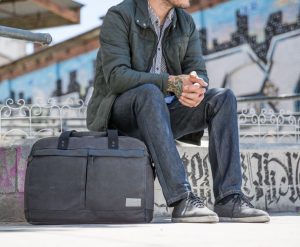
Once it’s been determined what the circumstances of travel will be (destination, duration, dates of travel, airline, time of travel and reasons for travel) I begin systematic long-distance reconnaissance of my trip in an attempt to learn everything I can about my time away from my home base.
- Destination: I first identify where I am flying in to (on a map) and where I will be staying and/or working. I ensure I have a solid understanding of the geography and routes in and out of those specific points, and mark them on a map. I will also identify my lodgings, airports, homeland allied embassies or consulates, nearby hospitals/clinics, police stations and possible hazards (like power plants, military bases, volcanos, etc). When I’ve oriented myself according to prominent features, I’ll have a general understanding of where important points are.
- Dates of Travel: What I bring and how I will travel is dependent not only on the purpose of travel, but also the climate and weather of my home base and destination. If it’s winter at home but warmer at my destination, may need to pack a different spread of clothes (winter and warmer) and have to wear while travelling and while away. If both areas are similar, then a single and consistent set of clothes works.
- Duration: I usually do everything I can to travel with carry-on only. Checked luggage slows you down (having to wait for your bags to be off-loaded) as well as making it more cumbersome to move about. Pack light, in a 2-3 tiered system while travelling, like an EDC (Every Day Carry) set-up (more on this in a bit). If you are travelling for an extended period of time, pack accordingly, but consider ditching most toiletries and possible consumables at home and buying what you need for your stay once you arrive in-country. That way you will be better prepared with locally acquired supplies and you won’t over pack.
- Packing: Like I mentioned in the previous point, I try to travel light and buy consumables (like regular toiletries, additional supplies, maybe even tools) locally when I arrive. I also believe in packing light and smart, the latter allowing you to maximize a few wardrobe pieces across many days and environments. I prefer clothes I can wash by hand in a hotel sink and have it ready the following morning to go. This includes socks and underwear. Buying some quality pieces of versatile clothing is key in your planning cycle. Also, packing light allows you to augment your clothing with locally procured clothes to better blend in with the local populace. This is especially important if you are trying to keep a lower profile while in a foreign land. As an additional to my packing, I try and pack in the following way to support a level of preparedness should some unforeseen issue arise so that I can have a better chance of dealing with it.
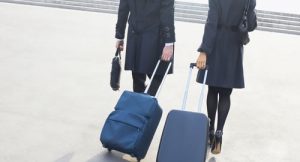
This list includes a tiered approach to carriage of what I am taking with me.
(NOTE: This is a recommended list and is not definitive. Pack according to your own requirements, but aim to pack light and with room to spare for souvenirs or other goodies you acquire on your travels.)
On my person ( and in my pockets and otherwise on me AT ALL TIMES include (but aren’t limited to):
- Passport
- Credit cards and CASH (cash is KING – be sure to have US dollars and try to get local currency you’ll be travelling in as soon as possible.)
- Charged cell phone with charging cable and adapter plug.
- Small EDC flashlight
- Small Bic lighter
- Small key ring with house key, Tactikey, 1-2 key tools and small lock pick keychain, encrypted USB key (with .
- Wallet & decoy wallet (with minimal cash, used for visible purchases at shops for snacks, taxis, etc.
- Watch
- Hat (type dependent on weather)
- Small, TSA-approved multi-tool (no knife).
- Other items of use (depending on climate & other circumstances).
- Bottle of water (empty while going through security, refilled in sterile area)
- Photocopies of all my documents and credit cards, emergency contact info for friends and family back home and consular resources while in-country, general map of the area I’ll be staying in (detailing safe zones and escape routes) and copy of my plane tickets.
- Sunglasses (and back-up pair of glasses or contacts if you wear them)
- Several pens (both Bic and Zebra brands – none of that Tactical pen stuff) and a notepad
- True North Tradecraft stickers, patches and business cards (to spread the Good Word).
- Pack of gum
- Button compass
- Sweater with waterproof shell jacket (either worn by me or in my backpack (next tier).
- Comfortable shoes
- Pants and appropriate belt
The above items will support me if forced to deplane ANYWHERE and should be able to affect a return to safety. Of course, everything depends on the situation, but having those as a minimum greatly increases my odds of making it to a better place.
As a second tier, that which should go in my “personal item” (i.e. my small backpack), I load the following. (Note, this tier is what I will grab if I have the opportunity and will have to live out of it. It has next-level important stuff. With these items, I can travel for a long time.
- Laptop (plus charger, cables, adapter, USB drives, etc)
- Change of socks, underwear and extra t-shirt or long-sleeved shirt (or both, if needed).
- Copies of all documents and information (just like the set I have on me.
- Back-up tools including everything I already have on my person.
- Some snacks for the trip
- Pens, notebook (double-up as on my person)
- Local map, guidebook/phrasebook (if needed).
- Books to read (1-2)
- First-aid kit (including medications and tourniquet if possible)
- Minimalist toiletries (toothbrush, mini toothpaste, mini deodorant, mini hand sanitizer, package of wet wipes, etc.)
- A couple of carabiners (climbing quality), a length of paracord, a padlock
With the backpack, and what I have on me, I have moved myself into the zone of “minimalist backpacker” and should be able, with augmented goods procured locally, to sustain myself until I either depart or until I can get help.
Lastly, my carry-on luggage. Stored in the over-head bin, this should round out whatever I need for a comfortable vacation or trip just about anywhere. As it stands now, the list below is what I will likely pack for my next trip.
- A rubber door wedge (for securing a hotel room)
- Glow sticks
- Mouse trap (seek out Ed Calderon for more info on this)
- Shorts
- Sandals (Teva-type)
- 2 x underwear
- 1x socks
- long-sleeved travel shirt & t-shirt
- swim trunks
- Toiletry kit (expanding on what I have in backpack – Polysporin, sun block, aloe gel, pain meds, Immodium, Gravol, wet wipes, etc)
- Extra First Aid Kit supplies
- Hank of paracord
- 2 more carabiners (climbing quality)
- Mask, snorkel, fins
- GoPro camera and accessories (cables, charger, SD cards, wall adapter, small power bar).
- Additional book to read
- Tradecraft tools (dependent on circumstances)
- Folding & reusable shopping bag (fits in pocket when out walking).
- Another copy of documents and emergency contact info, plane tickets, maps and local information
- Additional cash, hidden away somewhere.
- Air travel-friendly multi-tool
- Any other item I think is specifically needed for the trip (clothing, supply, tool, etc).
With the above list of items, and pre-planning taken care of, I feel pretty secure with myself. Adding to this all, maintaining vigilance and situational awareness wherever you go if of paramount importance.
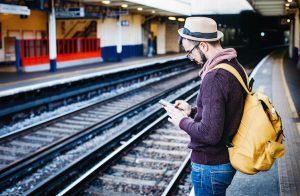
It’s important to ensure that you maintain situational awareness at all times. To read a bit more about this check out the Primer blog post here.
Pre-Trip Recon:
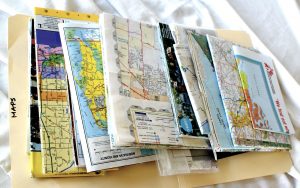
Before I travel, I try to learn all that I can about the area where I will be. I study things like currency, demographics, history, local customs, geography, political and social issues to be aware of, crime and attitudes towards tourists & foreigners. I also try to read up on things like transportation (what’s legit versus scam), local news stories and how to identify legitimate authorities. If I am able, I Google Maps/Earth my accommodations and nearby areas so I can landmark in my mind what it looks like where I should be.
Some resources that may be useful are:
- Google Earth / Maps / Street View
- Customs & Immigration agency website for Canada ( CBSA – Canada Border Services Agency ) and for the country (or countries) you’ll be visiting. This will inform you on border-related laws, requirements, processes and exemptions.
- Foreign Affairs Canada ( A lot of useful resources for Canadians travelling abroad)
- US Department of State – Travel Resources & Advisories
- CIA World Fact Book
- Trip Advisor (Access reviews, tips and local information for destinations around the world.)
- If flying, be sure to have access to both the website of your airline and the airport you are travelling to & from to ensure accurate scheduling information.
- Wikipedia – If you want to know something about your destination, read about it here.
- Google is your friend. Use it to learn as much as you can.
Before you go, ensure you leave copies of all your important documents, passports, travel itineraries, destination addresses and contact info with someone you trust and whom can support you in a return home should something happen.
Coming up next: On The Move…
Till then, stay safe and stay crafty.

